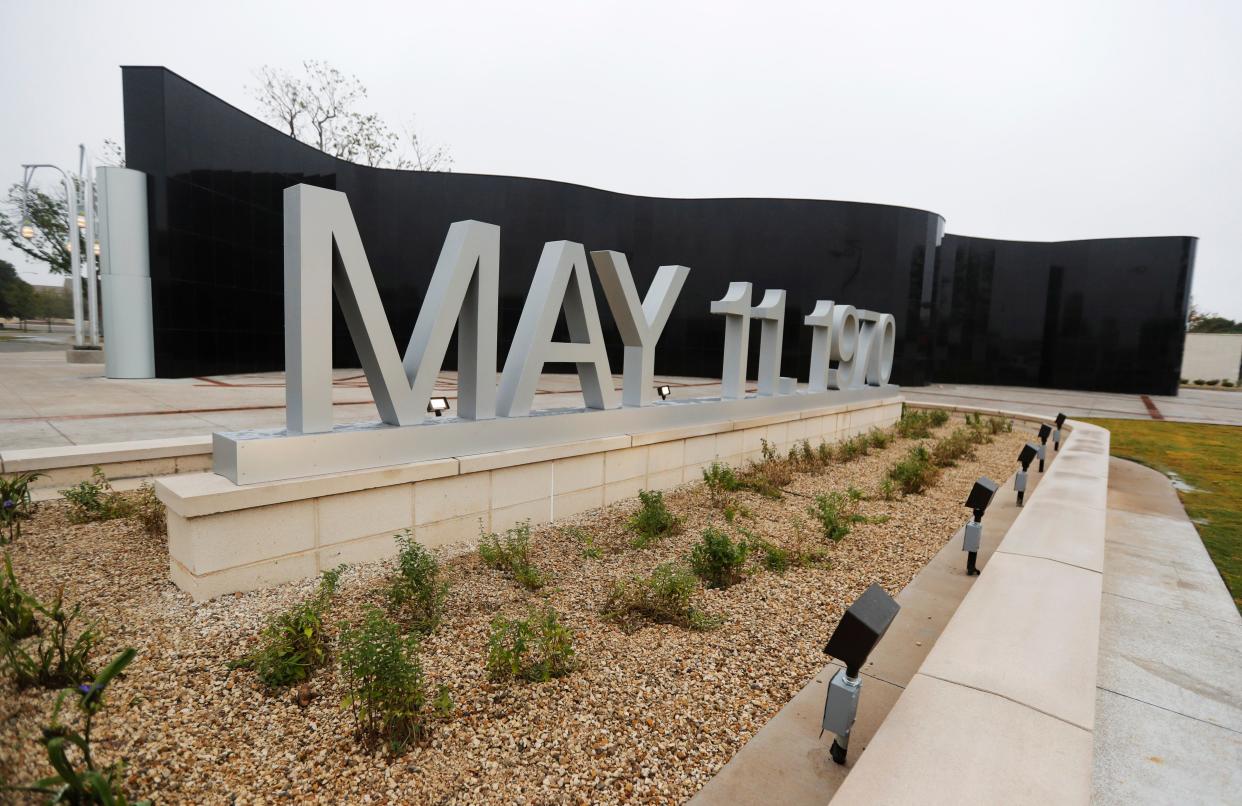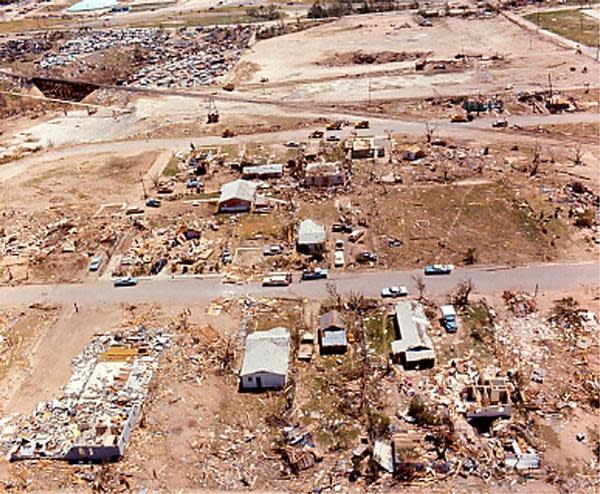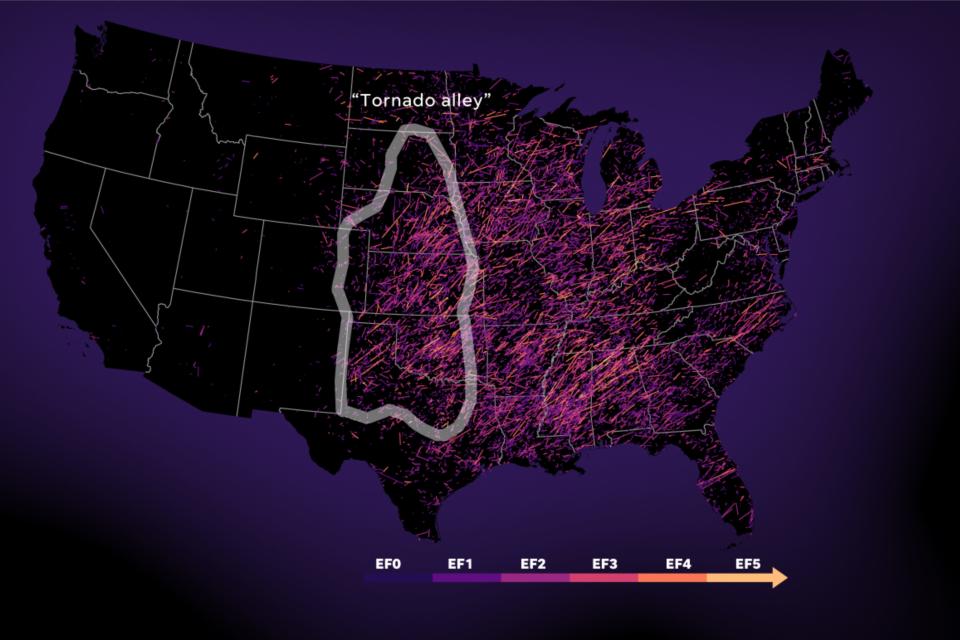What is the deadliest tornado in West Texas? Heres is what you need to know.

On the morning of May 11, 1970, the skies grew dark in Lubbock, and the winds started to gather strength as the stage was set for a natural event many in Tornado Alley pray never comes to pass near them.
Later that evening, according to the National Weather Service report of the day's event, tornadoes touched down in Wisconsin, Iowa, Kansas, Ohio and Texas — but the "most massive tornado touched down over the hears of the city of Lubbock."
The tornado outbreak in Lubbock left 26 people dead and caused widespread damage in much of the city, totaling over $100 million. To commemorate its 51st anniversary, the City of Lubbock unveiled a memorial to remember that fateful day.
Storms like this one are far and few between on South Plains, but when they occur — they are memorable. Here are some facts about tornadoes in West Texas.
What was the deadliest tornado in Lubbock?

At 8:30 p.m. on May 11, 1970, the first of two tornadoes touched down in the downtown area. Those tornadoes would ultimately claim the lives of 26 lives and injuring 1,500 individuals.
The tornado also helped inspire Theodore “Ted” Fujita to create the Fujita Scale — the predecessor of the EF Scale, which was also developed by Texas Tech Professor Kishor Mehta.
Has West Texas had an EF5 tornado?
Yes, the Lubbock tornado in 1970 has been the only F5 tornado out 24 counties in West Texas since 1950, according to the National Oceanic and Atmospheric Administration's National Centers for Environmental Information.
When was the last time Lubbock County had a tornado?
According to NOAA, there was an EF1 tornado in Lubbock County in April 2009 outside of Lubbock in Acuff. No deaths or injuries were reported.
Deadliest tornadoes in West Texas Since 1950
Since 1950, NOAA has reported 435 tornadoes across 24 counties since 1950 in West Texas. However, over the past 74 years, only 44 tornadoes have claimed 72 lives Here is a of the top six deadliest tornadoes in West Texas:
May 11, 1970 — an F5 tornado in Lubbock County claimed 26 lives.
May 15, 1957 — an F4 tornado in Briscoe County claimed 21 lives.
June 6, 1965 — an F4 tornado in Hale County claimed 4 lives.
July 21, 2023 — an EF3 tornado in Motley County claimed 4 lives.
April 12, 1960 — an EF3 tornado in Castro County claimed 3 lives.
July 22, 1975 — an EF1 tornado in Briscoe County claimed 3 lives.
How are tornadoes classified?
Tornadoes are measured on the Enhanced Fujita Scale, which replaced the Fujita Scale back in 2007.
The scale measures wind speeds of tornadoes by looking at the damage caused on the ground after it has dissipated. They are ranked from EF0 to EF5.
EF0 - light damage with wind speeds of 65-85 mph.
EF1 - moderate damage with winds of 86-110 mph.
EF2 - considerable damage with winds of 111-135 mph.
EF3 - severe damage with winds of 136-165 mph.
EF4 - devastating damage with 166-200 mph.
EF5 - With winds of over 200+ mph are the most devastating tornado on the scale.
A recent addition to the scale is an EFU tornado — an unidentifiable tornado. The National Weather Service classification is given when it knows there's a tornado but there's not always a lot of damage to classify it.
Where is tornado alley?

Tornado Alley is the part of the nation where tornadoes have primarily touched down, which stretches from eastern Texas and central Arkansas to Georgia and reaches as far north as southwestern Kentucky, southeastern Missouri and Tennessee.
More: 'Tornado Alley' is expanding: Southern states see more twisters now than ever before
How do tornados form?
At the root, tornadoes form when the weather has featured all the right ingredients: large amounts of water vapor and vertical wind shear, which is essentially "how winds change speed and direction in height."
This often happens in the eastern half of the U.S. when dry winds coming in from high over the Rockies meet moisture-rich, low-level winds coming from the Gulf of Mexico, according to USA TODAY.
This article originally appeared on Lubbock Avalanche-Journal: A look back at Lubbock's, West Texas' deadliest tornados since 1950

